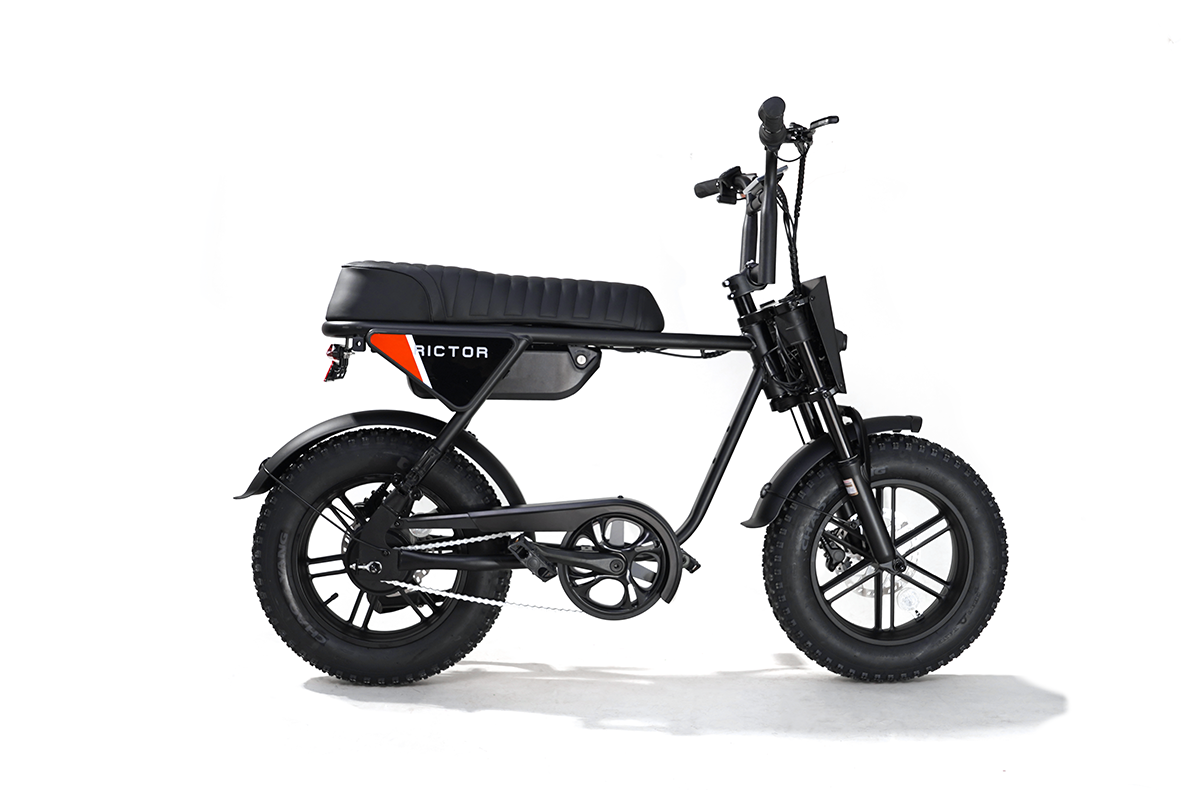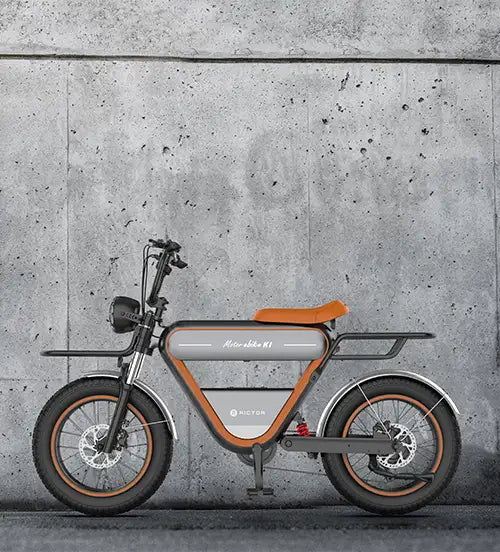
Bicycle Head Tube Sizes Explained: What You Need to Know Before Buying
When choosing a new bicycle frame or upgrading your fork, one of the most overlooked but crucial parts is the bike head tube size. This part of the frame plays a central role in determining your riding posture, steering response, and which components will be compatible. In this guide, we’ll explain what a head tube is, what the different size types mean, how to measure it, and what to consider before buying a frame or fork.
What Is a Bicycle Head Tube?
The head tube is the short, vertical tube at the front of the bike frame that holds the headset. This headset contains bearings that allow the fork to rotate smoothly when you steer. The head tube connects to the top tube and down tube and serves as the structural anchor for your bike’s front end. Inside the head tube, the steerer tube of the fork passes through, and the stem clamps onto it to hold your handlebars.
When people refer to "head tube size," they usually mean two things: the diameter of the head tube and the length of the tube. Both measurements affect how the bike fits you, how it handles, and which parts you can use.
Why Head Tube Size Matters
The size of your head tube determines:
-
What headset you can install (integrated, internal, or external).
-
What type and size of fork steerer will fit.
-
How high or low your handlebars will be positioned.
-
How stiff or responsive your front end will feel while riding.
A mismatch between head tube, headset, and fork can cause serious problems—from poor handling to unsafe riding conditions. So understanding head tube standards is essential for any cyclist building or customizing a bike.
Head Tube Length and Fit
Head tube length impacts the vertical height of your handlebars. A longer head tube results in a more upright riding position, ideal for comfort-focused bikes like endurance road bikes, gravel bikes, or hybrids. A shorter head tube lowers the front end of the bike and creates a more aerodynamic, race-oriented posture. This is preferred by competitive road cyclists or riders looking for aggressive geometry.
For example, a size 54 road racing bike might have a 130 mm head tube, while an endurance version of the same size could have a 160 mm head tube. That 30 mm difference can significantly change your posture and riding experience.
SEE ALSO Steps for Building Your DIY Electric Bike
Head Tube Diameter and Types
The diameter of the head tube determines what headset style and fork steerer tube you can use. There are three main types of head tube standards in the cycling industry:
1. External Cup (EC) Head Tubes
This is the traditional style where headset cups are pressed outside the head tube. It's commonly used on older bikes or entry-level models. The inner diameter of the head tube is relatively small because the bearings sit in cups on the outside.
Example: EC34 means the head tube has a 34 mm internal diameter and uses external cups to fit a 1 1/8” fork.
Advantage: Easy to service and often more durable in rugged conditions.
Disadvantage: Adds more stack height and weight.
2. Zero Stack / Internal (ZS) Head Tubes
In this design, the headset cups are pressed into the frame and sit flush with the edge of the head tube. It provides a cleaner look and lowers the stack height compared to external cups.
Common sizes: ZS44 (upper), ZS56 (lower) for tapered forks.
Advantage: Sleek design and protects bearings better from the elements.
Disadvantage: Requires tools to install and remove.
3. Integrated (IS) Head Tubes
This modern design eliminates headset cups altogether. Bearings drop directly into the frame’s built-in bearing seats. It’s lightweight, low-profile, and popular on carbon road bikes.
Common sizes: IS42 (upper), IS52 (lower) for tapered forks.
Advantage: Lightest and cleanest option.
Disadvantage: Less durable in heavy-use or off-road conditions.
Straight vs. Tapered Head Tubes
A straight head tube uses the same diameter at the top and bottom, typically for a straight 1 1/8” fork steerer. A tapered head tube is wider at the bottom and accommodates a tapered steerer that increases stiffness and strength. This is now the most common setup on performance bikes.
Most new road and mountain bikes use tapered head tubes and forks because they better handle the forces from disc brakes and rough terrain. A typical tapered fork goes from 1 1/8” at the top to 1.5” at the bottom.
Measuring Your Head Tube
To measure a head tube, you need to check:
Length – Measure from the top to bottom of the head tube, not including any headset cups.
Internal Diameter – Use calipers to measure the inside of the head tube at both ends. If the measurements are different, it's a tapered tube.
External Diameter – Useful if you’re checking compatibility for external headsets.
If you’re unsure, look up the manufacturer’s specifications or ask your local bike shop for help. Using the correct measurement is key to ordering the right headset or fork.
Head Tube Size by Bike Type
Different types of bikes use different head tube standards depending on their design goals:
Road Bikes
Road bikes often have shorter, integrated head tubes to support low handlebar positions. Race bikes focus on aerodynamics and have minimal stack height, while endurance bikes increase the head tube length for more comfort.
Mountain Bikes
Mountain bikes need strength and durability, so they usually use internal or zero-stack tapered head tubes. These support strong suspension forks with tapered steerer tubes and large lower bearings to handle hard impacts.
Gravel Bikes
Gravel bikes sit between road and mountain bikes. They often use tapered head tubes with either integrated or zero-stack headsets, balancing strength, weight, and comfort.
BMX and Hybrid Bikes
Most BMX bikes now use integrated head tubes for simplicity and weight savings. Hybrids and city bikes often use external cup or straight zero-stack headsets due to their lower cost and ease of maintenance.
Compatibility Considerations
Before buying a new frame or fork, check these:
Fork Steerer: Is it straight or tapered? Check its diameter and length.
Headset Type: Does your head tube support external, zero-stack, or integrated headsets?
Bearing Sizes: Not all 1 1/8” forks are the same—bearing sizes and angles vary by standard.
Stack Height: Do you need a taller or shorter front end? Head tube length and headset type affect it.
Material Strength: Lighter frames like carbon need precisely machined head tubes for integrated bearings. Aluminum or steel frames may offer more headset flexibility.
A Note on E-Bikes
If you're buying an electric bike, the head tube often needs to handle additional stress from a heavier frame and higher speeds. Many e-bikes now use oversized tapered head tubes and strong integrated headsets to accommodate larger steerers (some even use 1.8” steerer forks). Make sure to check compatibility when replacing forks or frames.
Final Tips Before Buying
Know your current setup – Measure your existing head tube and steerer before ordering parts.
Future proof your bike – A frame with a tapered head tube gives you the most flexibility for upgrades.
Consider riding style – Comfort riders may prefer a taller head tube; racers should look for shorter, stiffer designs.
Don't guess – Always confirm headset and fork compatibility with exact measurements or specs.
Conclusion
Whether you’re building a bike from scratch or upgrading your current setup, paying attention to the head tube size can save time, money, and a lot of headaches. Choose the right head tube type for your riding style and enjoy a smoother, more controlled ride every time.





